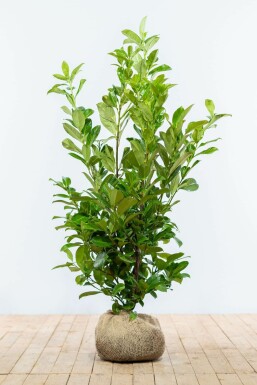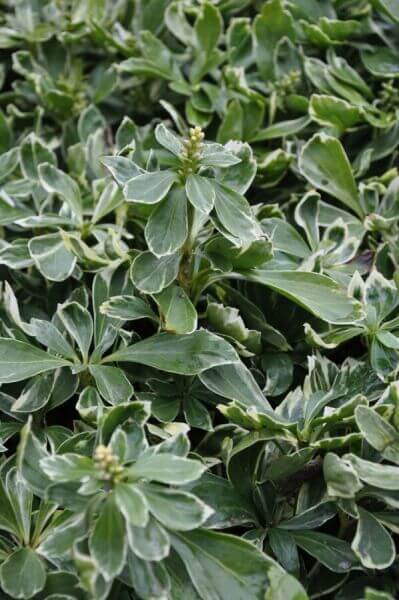Best Hedging Plants For Regular Pruning
Best Hedging Plants For Regular Pruning
Blog Article
Best Hedging Plants For Garden Screens
Boost your garden's allure with lush hedge varieties such as Yew (Taxus), Thuja, Laurel, Photinia, and Bamboo, celebrated for their structural integrity and environmental benefits.
Yew and Thuja supply evergreen coverage and winter strength, while Laurel offers fast development and broad, fragrant leaves.
Photinia includes seasonal appeal with its lively red foliage, and Bamboo lends a low-maintenance, tranquil ambiance.
These hedges improve air quality, lower noise, and develop tranquil, personal spaces.
Appropriate planting, spacing, and upkeep ensure energetic growth and ecological harmony.
Check out how these lush ranges can elevate your garden's beauty and well-being.
Secret Takeaways
Change Your Garden With Lush Hedge Varieties
- Select Yew for its thick, evergreen growth and unequaled longevity.
- Go with Laurel for its quick growth and broad leaves, guaranteeing fast privacy.
- Select Photinia for its lively seasonal foliage, which turns a striking dark red.
- Utilize Bamboo for a low-maintenance, winter-hardy hedge with visual appeal.
- Area plants 2-3 per meter and prune regularly for ideal development and health.
Popular Hedge Plants
When transforming a garden with lush hedge varieties, it's necessary to consider popular hedge plants such as Yew, Thuja, Laurel, and Photinia due to their unique attributes and advantages.
Yew (Taxus) is highly respected for its longevity and dense, green development, making it a prime choice for sustaining landscapes.
Thuja is noted for its evergreen foliage and robust winter season resilience.
Photinia adds seasonal vibrancy with red leaves that darken gradually, creating vibrant visual appeal.
Laurel offers fast growth and aromatic, broad leaves, perfect for fast personal privacy.
Furthermore, Bamboo is an excellent option for atmosphere, providing a low-maintenance, winter-hardy choice that enhances the garden's aesthetic with its classy, swaying walking canes.
These choices accommodate a variety of horticultural requirements and choices.
Benefits of Garden Hedges
Garden hedges offer a multitude of advantages, making them a valuable addition to any landscape. These natural barriers are economical to execute and provide substantial wind security, enhancing air blood circulation and contributing to noise decrease. The dense foliage of hedges like Thuja and Beech makes sure personal privacy by obstructing visibility, producing a secluded and tranquil environment.
Hedges also play a crucial role in microclimate regulation, supplying a stable environment that cultivates plant growth and reduces temperature level changes. Their intricate leaf structures filter contaminants, improving air quality and adding to a healthier garden environment.
Furthermore, hedges stand out in noise decrease, absorbing and deflecting acoustic waves to lower ambient noise levels. This dual performance of providing both acoustic and visual personal privacy improves the total tranquility and visual appeal of any garden.
Planting and Upkeep Tips
For an effective hedge, precise preparation of the planting area is essential. Ensure the soil has proper pH and drain to support strong root advancement.
Space the plants appropriately for the picked types. Water the hedge frequently throughout its preliminary development phase, adjusting as required with seasonal modifications.
Carry out a systematic insect control and illness avoidance strategy, using chemical or natural treatments when necessary. Regularly examine for aphids, mites, and fungal infections.
Apply mulch to retain moisture and reduce weeds. Seasonal pruning promotes dense growth and air blood circulation, essential for plant health.
Following these guidelines will help you cultivate a dynamic, properly maintained hedge that boosts the charm of your garden.
Spacing and Cutting Standards
Spacing and Cutting Standards
Correct spacing and cutting are vital for cultivating healthy, aesthetically appealing hedges. Adequate spacing ensures each plant gets adequate nutrients, light, and air flow.
Follow these guidelines for ideal hedge maintenance:
- Spacing: Position hedge plants 2-3 plants per meter to encourage robust growth.
- Pruning Techniques: Routine pruning is essential for maintaining wanted hedge height and shape. Cut brand-new development in summertime and cut back older wood during winter.
- Seasonal Care: Change cutting schedules and approaches according to seasonal requirements to guarantee plant health.
- Hedge Height: Regularly monitor and trim to keep the wanted hedge height and accomplish uniform visual appeals.
Abiding by these steps will ensure your hedge grows, boosting both the appeal and functionality of your garden.
Choosing the Right Hedge
Picking the Right Hedge
Choosing the appropriate hedge includes assessing factors such as fully grown height, foliage density, and environmental resilience. Effective hedge plant selection needs understanding each types' growth attributes and site-specific versatility.
For example, Yew (Taxus) uses excellent durability and dense development, while Thuja is noteworthy for its winter durability. Additionally, thinking about upkeep requirements is important; fast-growing types like Laurel or Privet demand routine trimming, whereas low-maintenance alternatives like Bamboo or Ivy might be more effective for those seeking very little upkeep.
Ecological aspects such as soil type, light accessibility, and wetness conditions ought to likewise guide the selection procedure. This careful method makes sure the chosen hedges will prosper, providing both practical and aesthetic benefits to the garden landscape.
Shipment and Planting Advice
To ensure your hedge plants grow, they should be delivered by specialized carriers and planted without delay upon arrival.
Follow these important steps for effective planting:
- Soil Preparation: Improve the soil with raw material to enhance drainage and nutrient content.
- Planting Depth: Develop a trench two times the width and equivalent to the depth of the root ball.
- Watering Methods: Water completely after planting, keeping the soil consistently damp however not saturated.
- Mulching: Apply a layer of mulch to keep wetness and suppress weeds.
Customer Assistance and Service
Given the essential function of prompt assistance in horticultural pursuits, our customer support group is readily available 6 days a week through telephone, e-mail, and social media to offer expert recommendations and promptly resolve any issues. Their devotion to fast action times makes sure consumer fulfillment by dealing with questions related to plant health, ideal planting techniques, and maintenance schedules.

Action Time
Within 24 hours
This detailed support group, enhanced by a stellar 9.3/ 10 customer score, highlights our commitment to enhancing the gardening experience for every client.
Often Asked Questions
For How Long Does It Take for Hedge Plants to Establish?
Hedge plants normally need one to 3 years to end up being completely developed, with the precise period varying by types and growing conditions.
Effective care during this critical period is important for robust growth. Consistent watering, vigilant weed control, and proper fertilizer application are essential in promoting strong root advancement.
For instance, fast-growing species like Laurel may establish quicker, while slower-growing ranges such as Yew may take longer. Persistent maintenance accelerates the establishment procedure, leading to healthy and dense hedges.
What Are the Best Hedge Plants for Privacy?
The concern of the finest hedge plants for personal privacy involves examining evergreen and deciduous options.
Evergreen hedges like Thuja, Laurel, and Cypress provide year-round protection, making sure continuous privacy.
On the other hand, deciduous hedges such as Beech use seasonal personal privacy, shedding leaves in colder months.
Secret upkeep suggestions for privacy hedges consist of regular trimming, fertilizing in spring, and correct spacing-- usually 2 to 3 plants per meter.
Additionally, constant watering and persistent weed removal are vital for promoting healthy, thick growth.
Can Hedge Plants Bring In Wildlife to My Garden?
Yes, hedge plants can draw in wildlife to your garden by providing vital benefits like shelter, food, and nesting websites, thus boosting local biodiversity. Yew, holly, and laurel are outstanding for attracting birds, while ivy supports a range of insects.
However, it's crucial to note that there are some downsides, such as increased maintenance to handle pests and regular maintenance. Carefully choosing and maintaining hedge varieties can assist balance these drawbacks and benefits, eventually fostering a dynamic and sustainable ecosystem in your garden.
Are There Any Blooming Hedge Plants Available?
Yes, there are flowering hedge plants available that can improve the charm of your garden.
For instance, Elaeagnus, also understood as Olive Willow, produces aromatic white flowers in the fall, including a touch of elegance.
Photinia, another popular choice, showcases dynamic red leaves that grow into an abundant green, creating a dynamic visual impact throughout the seasons.
To make sure these plants thrive, it's vital to practice appropriate pruning methods and seasonal upkeep, such as cutting brand-new development in the summer and cutting back in the winter.
These steps will assist preserve the health and visual appeal of your blooming hedges.
How Do I Avoid Bugs in My Hedge Plants?
To avoid pests in hedge plants, employ natural insect control techniques and preserve appropriate hedge care. Introduce useful pests like ladybugs, which victimize damaging bugs, to develop a well balanced environment.
Frequently check your hedges for indications of invasion and without delay remove any afflicted parts to avoid the spread. Make sure the health of your hedges by using balanced fertilizers and offering adequate water.
Utilize mulching to retain soil wetness and correct spacing to minimize plant stress and promote robust growth. These practices jointly assist in lessening insect problems and maintaining a healthy hedge.
Conclusion
In essence, choosing the read more ideal hedge ranges such as Yew, Thuja, and Laurel can transform any garden into a tranquil sanctuary. These plants offer year-round greenery, boost visual appeal, and offer useful advantages like noise decrease and wind defense.
Appropriate planting techniques, precise spacing, constant watering, and seasonal cutting are essential for ideal growth.
Reputable delivery services and skilled client support ensure a smooth experience from purchase to planting, making it simpler than ever to elevate your outside space.
Garden hedges use a wide variety of benefits, making them an important addition to any landscape. These natural barriers are affordable to implement and supply considerable wind defense, improving air circulation and contributing to noise decrease. The dense foliage of hedges like Thuja and Beech makes sure privacy by blocking visibility, developing a serene and remote environment.

Pruning Strategies: Routine pruning is vital for maintaining wanted hedge height and shape. Cut new growth in summer season and cut back older wood during winter.
Report this page